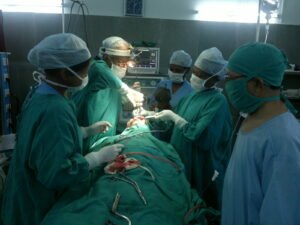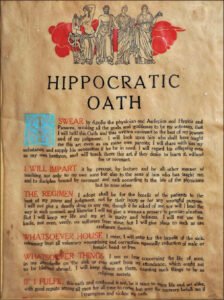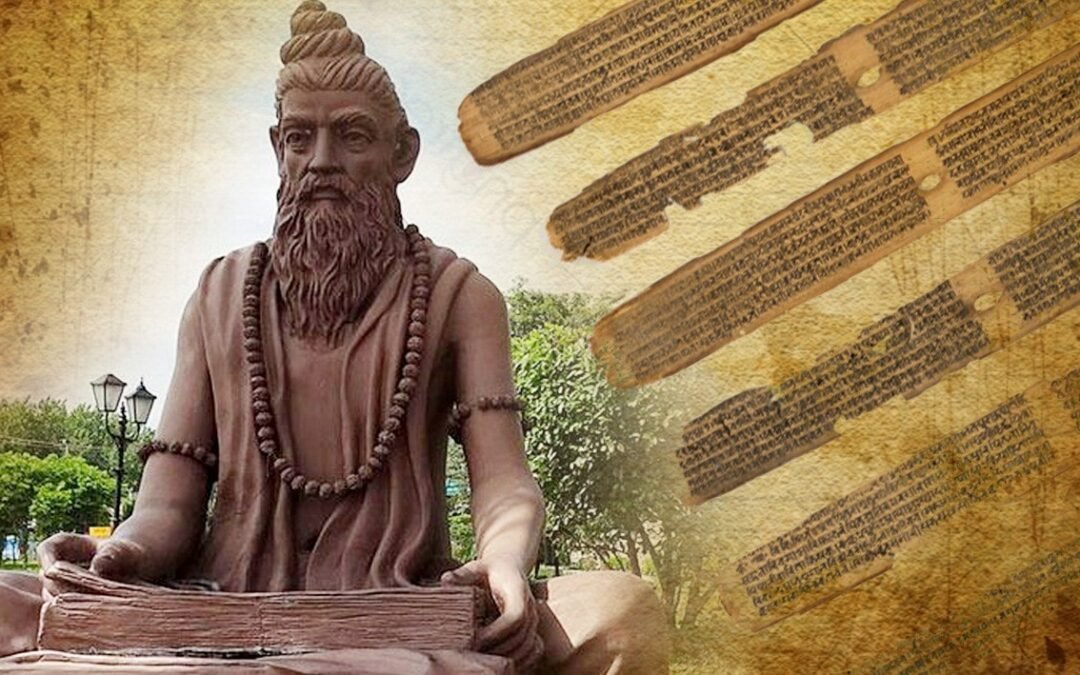Read in : தமிழ்
The Charaka Shapath, or the Oath of Charaka, has become the center of a controversy in Tamil Nadu. The Shapath, a part of the Charaka Samhita, that the central government has asked medical students to take, instead of the traditional Hippocratic oath, has been strongly opposed by the DMK government. As a code in Sanskrit that contains some quaint ideas, the Shapath has come in for much criticism in the state.

Nayana Sharma Mukherjee, Associate Professor of History in South Calcutta Girls’ College affiliated to Calcutta University. She states, “The term ‘charaka’ in Sanskrit refers to wandering religious scholars or mendicants with expertise in medicine”.
inmathi.com did an interview with Nayana Sharma Mukherjee, co-author of the book Essays on History of Medicine along with Susmita Basu Majumder. Nayana Sharma Mukherjee is Associate Professor of History in South Calcutta Girls’ College affiliated to Calcutta University. She has researched on the history of food and diet in ancient India and her doctoral thesis is on the social history of ancient Indian medicine. She is the co-author of Essays on History of Medicine. She has also translated Assamese short stories into English. Ms Mukherjee gave a careful, detailed interview suffused with scholarly objectivity.
How old is the Charaka Samhita out of which the shapath is being recommended? Or is it that there was a core text and extrapolations later on.
The Charaka Samhita or Caraka Samhita is one of the fundamental texts of ancient Indian medicine. It is the oldest and most authoritative medical treatise in India. The Charaka Samhita is not the work of a single author and, interestingly, Charaka is not the original author of the compendium. The existing treatise is a redaction of an older text, Agnivesha Tantra or Agnivesha Samhita, which is no longer available, and its date is not known. This treatise was compiled, edited and modified by Charaka probably sometime by the 2rd century CE.
Thus, the core text of Agnivesha came to be popularly known by the name of the redactor, though there is little information about Charaka. The term ‘charaka’ in Sanskrit refers to wandering religious scholars or mendicants with expertise in medicine. Either some scholars of this group of charakas or an individual of this name may have carried out the work of redaction.
In course of time, a portion of this work got lost or damaged as is mentioned in a passage at the end of the last section of the treatise. A scholar from Kashmir, by the name of Dridhabala, who belonged to the 4th– 5th centuries CE added certain chapters to the existing text after referring to other available medical works. He clearly mentions the chapters added or reconstructed by him and acknowledges the contributions of Agnivesha and Charaka. In the process, he revised and edited the Charaka Samhita once more, thereby giving it a complete form. Quotations from the treatise can be found in other Sanskrit texts from the 5th Century CE onwards.
The Charaka Samhita or Caraka Samhita is one of the fundamental texts of ancient Indian medicine. It is the oldest and most authoritative medical treatise in India. As medical knowledge grew, additions were made to the text.
Through this process of redaction, the work of Agnivesha became a compendium. The term ‘samhita’ itself signifies that it is a compendium, that is, the medical knowledge acquired from early times is documented methodically in the text. As medical knowledge grew, additions were made to the text.
As a body of work, what is the relative merit of the work vis-a-vis medical knowledge of its times?
The significance of the Charaka Samhita cannot be overstated. Together with the Sushruta Samhita and the Ashtanga Hridaya Samhita, the three treatises form the Brihat Trayi or ‘The Great Triad’ have laid the foundation of Ayurveda. Charaka Samhita is a work dedicated to kaya–chikitsa or internal medicine while the Sushruta Samhita is an authoritative work on surgery. Vagbhata, the author of the Ashtanga Hridaya Samhita, has summarized large portions of both Charaka and Sushruta and is indebted to both these treatises.
The compendium of Charaka is in the nature of an encyclopaedic work. The origin, pathogenesis, diagnoses, and prognoses of diseases, their management, the principles governing medicinal drugs and their preparation have been dealt with in detail as one expects. If anyone wishes to know about the origins of this medical science and fundamental principles governing it, the ways of maintaining health and preventing disease, and the philosophical underpinnings of this science, then also she or he would have to refer to this treatise. The relationship between health and the seasons, hygiene, diet and behavioural code have also been explained.

The book “Essays on HIstory of Medicine”, co-authored by Nayana Sharma Mukherjee.
Ever since, the basic theoretical principles laid down by this work, such as the theory of the three doshas, have been followed by all succeeding authors. From this work we get to know about the other branches of medicine that had their own specialists, such as, Surgery, Toxicology, Paediatrics, Psychiatric disorders, Geriatrics and Rejuvenation Treatment. It also throws light on the education of physicians and the ethics of the medical profession.
It is a measure of its popularity that several commentaries in Sanskrit and other languages have been composed on the Charaka Samhita since the 4th Century CE. The most well-known commentator is Chakrapani Datta whose composed his work Ayurveda Dipika in the 11th Century CE. It was translated into Persian and Arabic languages also. The only other work comparable in authenticity is the Sushruta Samhita which belongs to a different branch altogether. There were some other treatises, among which some have been lost, but none could achieve the popularity and authority of the Charaka Samhita. The historicity of the treatise is not in question.
What does the Charaka Shapath say? What are its positive elements, its regressive aspects? Was the Shapat an extrapolation?
Probably not many people are aware that the concept of an oath taken by the practitioners of ancient Indian medicine was proposed more than a century ago by some American physicians who had formed The Medico-Historical Club in New York in 1898 that was later renamed The Charaka Club. Dr. Bernard Sachs made a presentation on ‘Hindoo Medicine’ which piqued the interest of the other members. The VIth volume of its proceedings has a page with the title, the “Oath of the Hindu Physician’. This oath was created by the club members from the instructions of the preceptor to his disciple in the Charaka Samhita.
The compendium of Charaka is in the nature of an encyclopaedic work. The origin, pathogenesis, diagnoses, and prognoses of diseases, their management, the principles governing medicinal drugs and their preparation have been dealt with in detail as one expects. But refusing treatment to those who are socially excluded is among the norms considered essential to be professionally successful.
The teaching and learning process in medical science has been explained in the Charaka Samhita beginning with the qualities of the teacher, the student, the selection of texts, method of learning, etc. This is followed by the description of the initiation ceremony, that is, initiation of the student into medical training. In front of the sacred fire, the teacher gives directives regarding the code of conduct for the student during his studenthood whereby the disciple pledges absolute obedience towards the teacher. He should be respectful towards the preceptor as a son is to his father and a servant to his master.

Doctors in surgery at an Indian hospital (Photo Credit: Flickr- Sadasiv Swain)
This is followed by a set of instructions related to professional ethics to achieve success, wealth and fame. To touch upon some of the significant aspects of these instructions, the practitioner should make efforts to cure the patient, never bear ill will, act without jealousy, refrain from divulging family secrets and strive for upgradation of knowledge. Personal attributes such as modesty in appearance, pleasantness in speech, truthfulness, and rejection of conceit and arrogance are emphasised. On the other hand, paying respect to cows, brahmanas, and all other living beings, staying away from the company of wrong-doers, and refusing treatment to those who are socially excluded are considered essential to be professionally successful. The physician should not give treatment to persons of abnormal, wicked, miserable conduct and character, whose honour is not vindicated, those who are unlikely to survive, or those who are despised by the king or who are critical of the king. Female patients unaccompanied by male guardians are also to be denied treatment. This is the discriminatory part of the physician’s code of ethics.
Was this advice administered as an oath (Shapath) to graduate doctors? That is not evident from the text. The text says that after the preceptor gives the instructions, the disciple is expected to say “tatha”, i.e., “I shall act accordingly” and he is considered eligible for his training. These directives are given before the commencement of studies. The instructions for obtaining success in professional life appear to be more in the nature of guidance or advice. It is not mentioned that the disciple took an oath at the end of his studies before entering the profession. Whether this part is an extrapolation or not, is an issue that requires a comparative study of the various manuscripts.
Both the Hippocratic and Charaka oaths stress on professional ethics and the conduct of physicians that must be situated in their social context. As several new concerns have emerged with the latest developments and methods of medical practice and research, the oaths administered to physicians need to take them into account.
The Shapath gives a certain cultural take on a doctor’s profession, some would say. What do you think?
According to some recent reports on the Charaka Shapath, doctors taking the oath are expected to adopt vegetarianism, grow beards and long hair, and avoid the consumption of alcohol as mentioned in the compendium. But the rules of celibacy and vegetarianism in the Charaka Samhita are meant only for students till the end of their studies.
The initiation ceremony for medical students is modelled on the upanayana ceremony described in the Vedas by which students are initiated into Vedic studies. This was deliberately done with the objective of gaining respectability for medical practitioners. If we look at the position of physicians and surgeons in the Brahmanical law books, such as the Manu Smriti, we find that they are denigrated and given a position much lower in the social scale. It is said that their food cannot be touched by the higher orders as these practitioners deal with blood, pus and ordure. The initiation is, therefore, designed to take place in the presence of the holy fire and priests to give it solemnity. Hence, the focus on discipline, humility, calmness, modesty, propriety, reticence, purity and rejection of materialistic aspirations. These aspects are emphasised in the modern Charaka Shapath as well. Besides, it was written purely from the male point of view at a time when there were hardly any women who got the opportunity of taking up medicine.

The Hippocratic Code, which goes back to c. 400 BCE, focusses on the obligations of the physicians towards the preceptor, the patients and the students of medicine. The code, however, was originally meant only for male physicians
How does the Shapath compare with the Hippocratic Code?
The Hippocratic Code, which goes back to c. 400 BCE, focusses on the obligations of the physicians towards the preceptor, the patients and the students of medicine. An important duty of the physician in the Code is the transmission of knowledge. Thus, the code enjoins upon him to impart the knowledge of the medicine to his own sons and disciples, as well as to the sons of his teachers. He takes the oath to give beneficial treatment to the patients to the best of his ability and judgment and avoid giving anything harmful and lead an exemplary life.
The Hippocratic Code does not make exceptions to treatment as the physician is required to attend to all seeking treatment irrespective of the social position or political ideology or gender of the patient. The code, however, was originally meant only for male physicians and it has undergone several revisions.
In comparison, the Charaka Oath gives greater emphasis to the moral character of the practitioner and to establishing the respectability of the medical profession. Both the oaths stress on professional ethics and the conduct of physicians that must be situated in their social context. As several new concerns have emerged with the latest developments and methods of medical practice and research, the oaths administered to physicians need to take them into account.
Read in : தமிழ்











